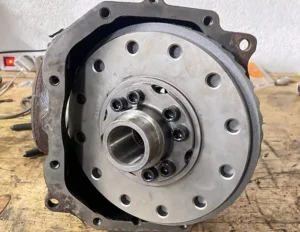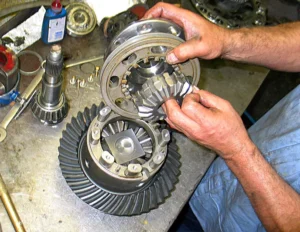
The transmission system is a crucial component of any automobile, responsible for transferring power from the engine to the wheels. Understanding its components is essential for grasping how vehicles operate efficiently. This article delves into the key components of automotive transmission systems, explaining their roles and significance.
Clutch
The clutch plays a vital role in allowing the engine to remain disconnected from the road wheels. It facilitates the transfer of rotational motion from the crankshaft to the road wheels only when engaged by the driver. Operating on the principle of friction, the clutch ensures a gradual engagement, allowing for a smooth start of the vehicle. This mechanism is essential for the seamless operation of manual transmissions and some automated systems.
Gearbox
The gearbox, also known as the transmission, consists of pairs of gear wheels that efficiently transmit motion from the crankshaft through the clutch at varying speeds. By providing the necessary leverage between the engine and the road wheels, the gearbox adapts to different driving conditions and requirements. It adjusts the torque and speed of the vehicle by selecting appropriate gear ratios, ensuring optimal performance and fuel efficiency.
Propeller Shaft
The propeller shaft bridges the gap between the gearbox and the differential, accommodating the substantial distance between these two components. Being slender and lengthy, it facilitates the connection, transmitting power from the gearbox to the differential. This component is essential for maintaining the efficiency of the power transfer process within the transmission system.
Differential
The differential is crucial for redirecting motion by 90 degrees, aligning the axis of the propeller shaft with that of the live axle. Through a wheel and pinion arrangement, it regulates the speed difference between the inner and outer wheels during turns, ensuring smooth and stable vehicle handling. The differential allows each wheel to rotate at different speeds, particularly important when navigating corners.
Live Axle
The live axle is responsible for transferring motion from the engine’s crankshaft to the road wheels, driving the vehicle. In contrast, the dead axle primarily bears the vehicle’s weight. Motion is typically directed to the rear axle, but it can also be distributed to the front axle or both in a four-wheel-drive configuration. The live axle ensures that the road wheels rotate, generating the necessary friction with the road surface for vehicle movement.
Transmission Fluid
Transmission fluid is a special lubricant designed to ensure smooth operation of the transmission system. It lubricates moving parts, reduces friction, and helps cool the transmission. Types include automatic transmission fluid (ATF), manual transmission fluid (MTF), and continuously variable transmission fluid (CVTF).
Synchronizers
Synchronizers within a manual transmission allow gears to engage smoothly. They match the speeds of the gear and the shaft, ensuring smooth shifting. Components include the synchronizer hub, sleeve, and ring.
Driveshaft
The driveshaft transmits torque from the transmission to the differential. It transfers power from the gearbox to the differential, with components including yokes, universal joints, and splines.
Shift Linkage
Shift linkage connects the gear shifter to the transmission, translating the driver’s gear selection into movement within the transmission. Types include mechanical linkage and electronic shift-by-wire systems.
Flywheel
The flywheel stores rotational energy, providing a smooth transfer of power by maintaining engine momentum. Typically made of cast iron or steel, it is connected to the clutch assembly.
Valve Body
The valve body in automatic transmissions directs hydraulic fluid to various valves to control gear shifting. It includes valves, solenoids, and hydraulic fluid passages.
Conclusion
The transmission system is a marvel of automotive engineering, comprising numerous components that work together to deliver power from the engine to the wheels. Understanding these components helps in appreciating the complexity and efficiency of modern vehicles. Regular maintenance and proper care of the transmission system ensure longevity and optimal performance of your automobile.



